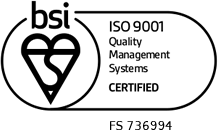Whilst, of course, the science of textiles and fabrics is not to be confused with physical materials science, there are nevertheless many areas of cross-application.
Smart textiles can be broadly split into two broad categories:
– modern so called ‘technical fabrics’: these include for example, fabrics designed to regulate temperature and humidity, protect against UV/radiation, selectively repel or absorb water, protect against bacterial infection, resist abrasion or piercing impacts, and so on. Such materials may make use of micro-encapsulation, micro-fibre and nano-fibre compositions, phase changing and reactive constituents and composites.
– so called ‘smart fabrics’: which may include some of the above, but also incorporate eg: embedded electronic systems, wearable technology, energy scavenging technology, and so on. typically, they may utilise conductive yarns and thin-film or printed electronics, also piezo-electric polymers.
Markets for such applications are equally broad: At one end, consumer fashion, at the other end military and medical, serviced by some unlikely partnerships between high tech companies and clothing manufacturers. Amongst the novel products of this sector we can find eg: shirts that can allow the deaf to ‘feel’ and see music, and the blind to sense their environment through haptics; the military, and others to be better protected from extreme environments and ballistics, better hidden using reactive camouflage and identified and monitored via wireless embedded transponders. Medical applications also abound, for example wireless bio sensors and energy harvesting devices embedded or woven into clothing and wound dressings.
Applications of Piezo Materials in Textiles and Fabrics
Besides the common piezoelectric materials such as single crystals or ceramic materials, some polymers also exhibit piezoelectric properties.
The most well-known piezoelectric polymers are PVDF and its copolymers. Despite the fact that these polymers exhibit a relatively low piezoelectric activity, in comparison to the ceramic ones, they can offer better processing flexibility, high voltage sensitivity (excellent sensor characteristics), and high strength. For example, one of the objectives of a European project, ProeTEX, is to make piezoelectric fabrics from PVDF, which can be used in clothing. The investigations are focused on several PVDF tapes, with a width of a few millimetres in a textile.
There is also current research into textile fibres covered with zinc oxide nano-wires, as a way of generating electricity.
Textile fabrics integrated with piezoelectric materials, are capable of converting mechanical energy from sources such as wind, human movement, and so on, into electrical energy. Piezoelectric fabrics could, for instance, be used in the construction of wind-harvesting banners, or in the design of clothing capable of collecting some of the mechanical energy associated with walking or running. The harvested energy can be used to either directly power a device, or to recharge batteries.
Examples of devices powered in this way, might include, wireless sensor networks, wearable instruments, light-emitting diodes, OLED and electrophoretic displays, haptic transducers, and many more.



